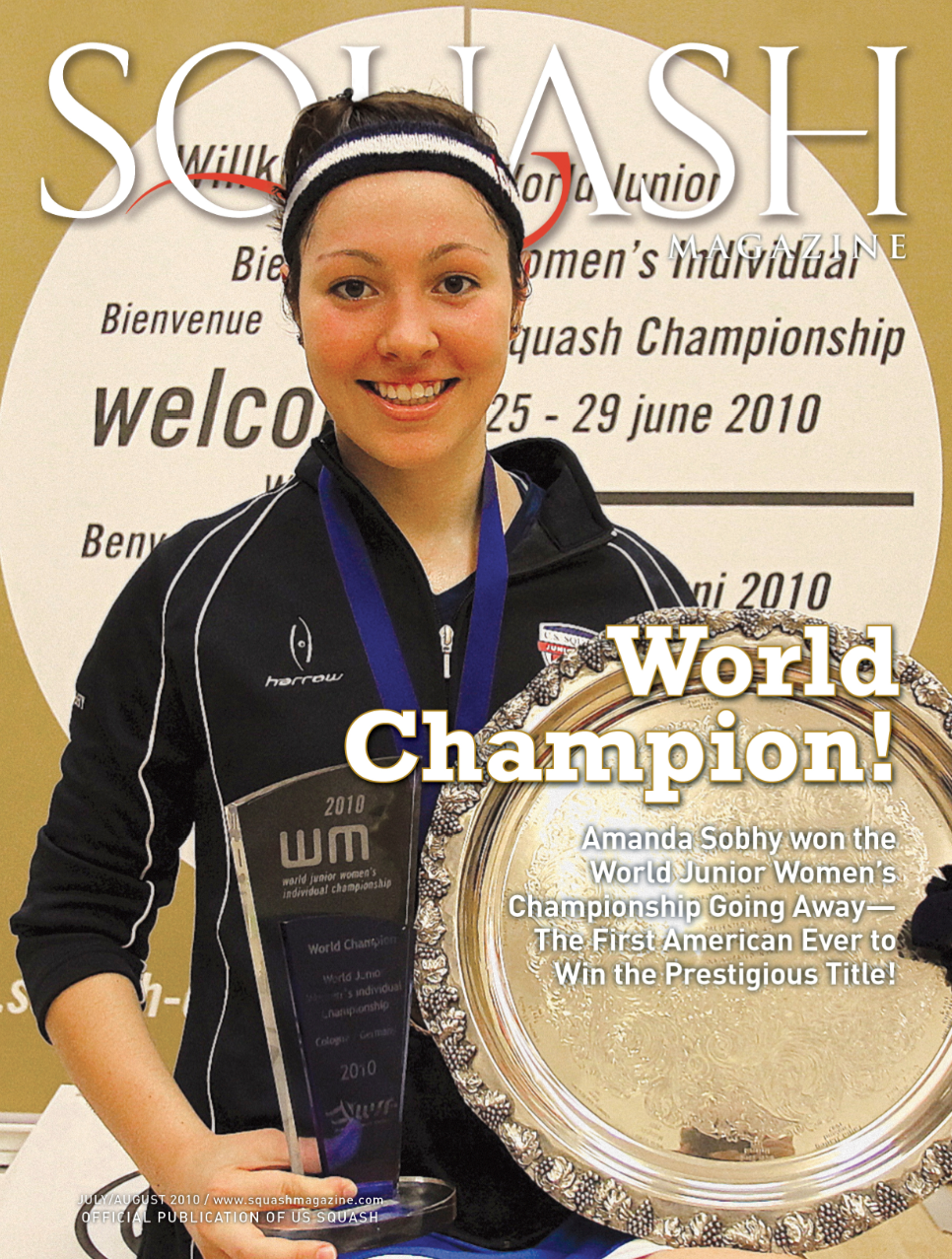By Jay D. Prince
When will an American squash player be World No. 1? That is the single most frequently asked question I have had since starting Squash Magazine in 1997—period.
For years, my matter-of-fact response has been that it will probably take at least a couple of generations of players having played nothing but softball. That’s it. I’m not talking about softball in a vacuum, such that one never experiences hardball doubles. What I’m talking about is a generation of players who cut their teeth in this game with the international game—full-size courts and the squishy softball.
U.S. SQUASH (yes, I know it was the USSRA in the past, but it’s the same organization so I’m done making the distinction) adopted the softball as the standard in the early ‘90s. But most players in this country for the next 10 years or so were converted from hardball. And I believe that expecting someone to become the best in the world in softball having grown up with the hardball is unrealistic. Mark Talbott was as close as anyone ever came, and he would admit that while he dominated the hardball game, he really didn’t come close in softball.
Following along to the early 2000’s, the barometer for US players on the international level would require looking at how the 15-19 year-old junior players were doing in this country. I’m sure you’ll recall that American girls were the first to achieved a respectable level of success internationally. There was Michelle Quibell turning heads at the British Junior Open; the US Junior Girls cracked the top-5 at the 1999 World Team Championships and then followed that up with a fourth place finish in 2001 (a feat that has been repeated over the past nine years); Latasha Khan reached a high of World No. 18 in 2000 (she really started playing the WISPA tour full-time in the late ‘90s and has kept her ranking in the 20s consistently since 2000); and Julian Illingworth broke into the World’s top-30 last December—and was just 16-years-old in 2000.
Fast forward to today, and for the first time in the modern era of international squash, an American in the form of Amanda Sobhy has captured a World Championship title. Does that make her World No. 1? Of course not. But she has jumped into that rarefied air of becoming one of the best junior players in the world. That cannot be denied. And something that should not be lost in the significance of what Sobhy has accomplished is the fact that Olivia Blatchford also reached the quarterfinals of the Junior Worlds this summer. Sobhy and Blatchford are just 17-years-old and both fall into the category of “second generation” American softball players in the sense that they are the second group of juniors who are reaching the end of their junior careers having played softball singles without beginning with hardball singles.
Looking ahead, the Junior Men’s World Team Championships are about to begin in Quito, Ecuador. No junior men’s team has ever finished in the top-10, but this team has a realistic chance of doing just that. And one of their players, Dylan Murray, will be eligible to play again in two years. They were preliminarily seeded No. 14 as a team going into the event, but if the team members play well in the Individual Championship the week prior to the Team event, that seeding could go up—along with expectations.
So while I’m still not prepared to put a date on which an American will be ranked World No. 1, that notion is no longer as farfetched as it once was. It is an exciting time to be part of squash in this country, despite it’s continued place in relative obscurity. Perhaps one day that question will become, “When will an American squash player—or simply, squash as a sport—be featured on SportsCenter or in Sports Illustrated?” (for reasons other than controversial).
America loves World Champions and World No. 1’s, especially when they are home grown. It could happen.




